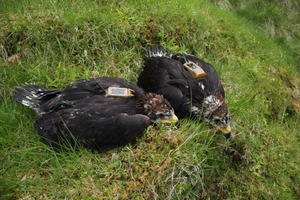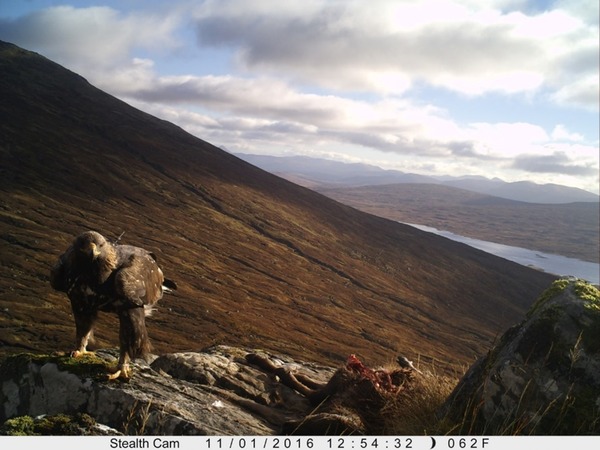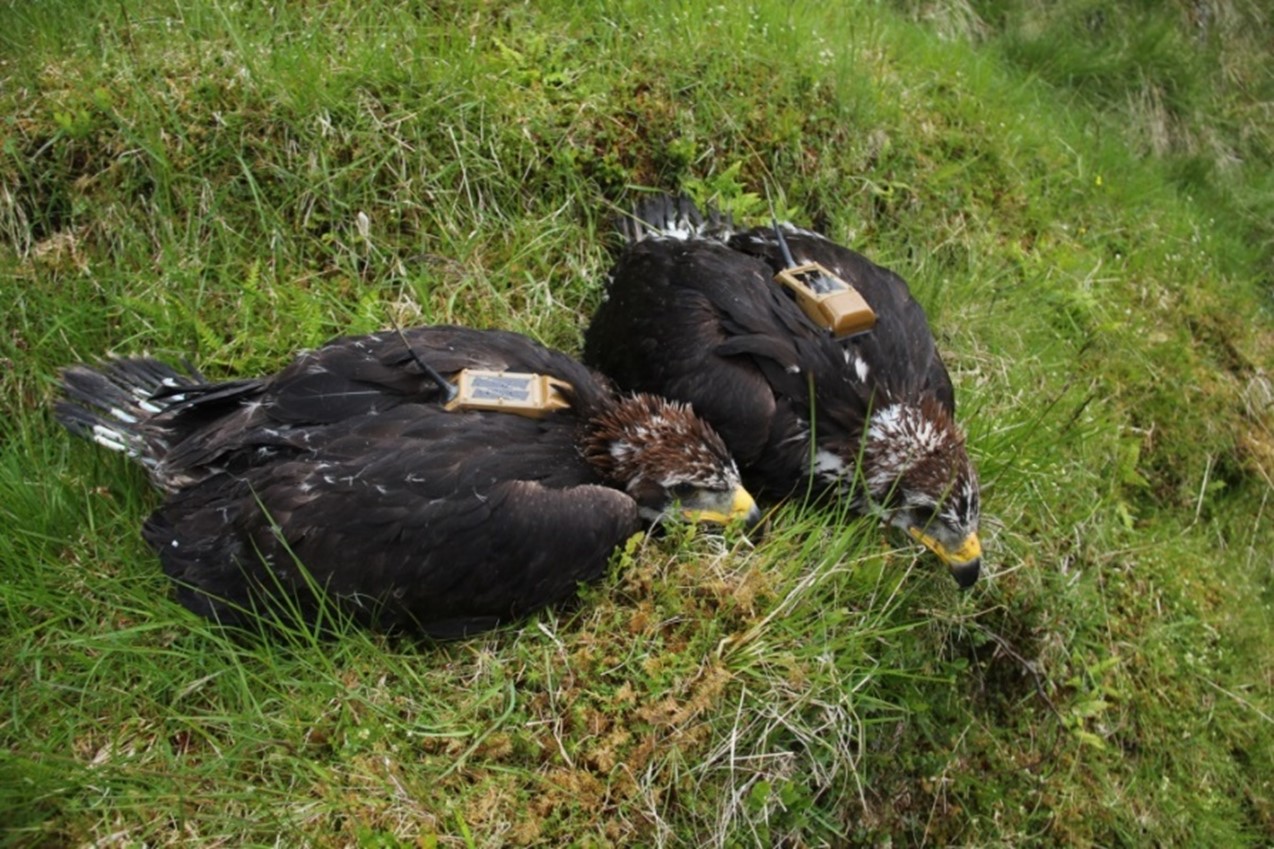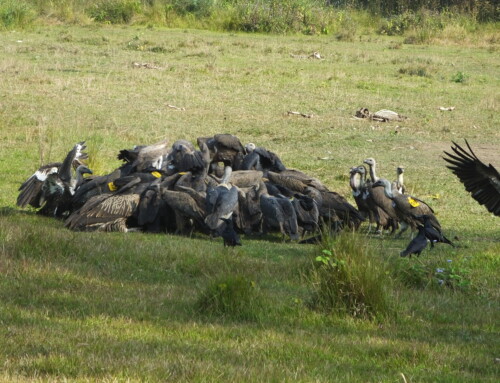 LINKED PAPER
LINKED PAPER
Sex difference in natal dispersal distances of Golden Eagles Aquila chrysaetos in Scotland. Whitfield D.P., Fielding, A.H., Anderson, D., Benn, S., Reid, R., Tingay, R. & Weston, E.D. 2023 Ibis. doi: 10.1111/ibi.13225 VIEW
Understanding how large raptors select a breeding range is important for understanding their ecology and helping to conserve them. However, for a long-lived bird, which may not settle for several years, it is not easy to discover when and where birds have settled. Advances in satellite tracking technology are helping us gain insights into the settlement behaviour of Golden Eagles (Aquila chrysaetos), at least in Scotland.
Natal dispersal distance (NDD) is the linear distance between a bird’s natal site location and its first reproductive or potentially reproductive location (Greenwood 1980, Greenwood & Harvey 1982). This is a critical measure underlying avian population dynamics, gene flow, and connectivity between different generations and geographical regions. NDD measures are not just of academic interest because they also have a role in applied ecology, not least conservation.
Sex difference in NDD has been suggested as adaptive, including avoiding inbreeding. Long-standing theory has predicted that for birds, unlike mammals, males should move shorter distances between their birthplace and their first settlement location where reproduction may happen (Greenwood 1980, Greenwood & Harvey 1982).
There are not many robust tests of this important prediction in large eagles (Whitfield et al. 2009, Millsap et al. 2014). Empirical testing in large eagles has proved difficult, for several logistical reasons.
Our paper in Ibis suggests that sample size of sexed birds has probably been contributory to this difficulty but indicates that GPS-telemetry can assist positively.
Mostly using an algorithm analysing GPS-telemetry data from Scottish Golden Eagles, which appears robust and confirmed by field efforts (Whitfield et al. 2022) we can detect when a satellite tracked bird settles on a territorial breeding range. This allowed us to confirm that male eagles had a statistically lower NDD (30 km) than females (59 km).

Figure 1 A GPS-tagged Golden Eagle recorded by a ‘camera trap’ at a bait site during natal dispersal in the Highlands of Scotland, prior to settlement on a territory © Dave Anderson.
So, there was a sex difference. But within each sex there was also a wide variation in NDD. For males the range was 6 – 82 km and for females 12 – 87 km.
Why this wide variation? Why, aside from their sex, combined with an another (likely inherent) philopatric pull, did some eagles settle within a few kilometres of where they originated, whereas others settled much further away?
We examined a couple of possibilities. One was natal dispersal duration – the time between when an eagle left its natal site and when it settled on a territory. We posited that if this time was shorter eagles could have taken less time to explore possibilities further away from where they originated. And so may have settled at lower NDD.
Our second possible explanation was the prior occupancy status (vacant or occupied) of the settled territory. This was highly influential in the time taken by dispersing young birds to settle, with younger birds settling earlier in vacant territories (Whitfield et al. 2022). Hence, a lower NDD may also be associated with a vacant prospective territory.
We found no support for these two other potential drivers of NDD variation which means we are left with questions that remain unanswered in a field of study which, for large eagles, has barely scratched the surface on why they behave as they do.
Despite their iconic stature for many peoples and societies, these birds remain somewhat enigmatic and are difficult to study. Many researchers persist in the challenge of discovery, even though some head-scratching can be a part of this, and GPS-telemetry is an increasingly useful tool.
References
Greenwood, P.J. 1980. Mating systems, philopatry and dispersal in birds and mammals. Animal Behaviour 28:1140-1162. VIEW
Greenwood, P. & Harvey, P.H. 1982. The natal and breeding dispersal of birds. Annual Review of Ecology and Systematics 13:1-21. VIEW
Millsap, B.A., Harmata, A.R., Stahlecker, D.W. & Mikesic, D.G. 2014. Natal dispersal distance of bald and golden eagles originating in the coterminous United States as inferred from band encounters. Journal of Raptor Research 48:13-23. VIEW
Whitfield, D.P., Douse, A., Evans, R.J., Grant, J., Love, J., McLeod, D.R.A., Reid, R. & Wilson, J.D. 2009. Natal and breeding dispersal in a reintroduced population of White-tailed Eagles Haliaeetus albicilla. Bird Study 56:177-186. VIEW
Whitfield, D.P., Fielding, A.H., Anderson, D., Benn, S., Dennis, R., Grant, J. & Weston, E.D. 2022. Age of first territory settlement of Golden Eagles Aquila chrysaetos in a variable competitive landscape. Frontiers in Ecology and Evolution 10:743598. VIEW
Image credit
Top right: © Ewan Weston.
If you want to write about your research in #theBOUblog, then please see here.




